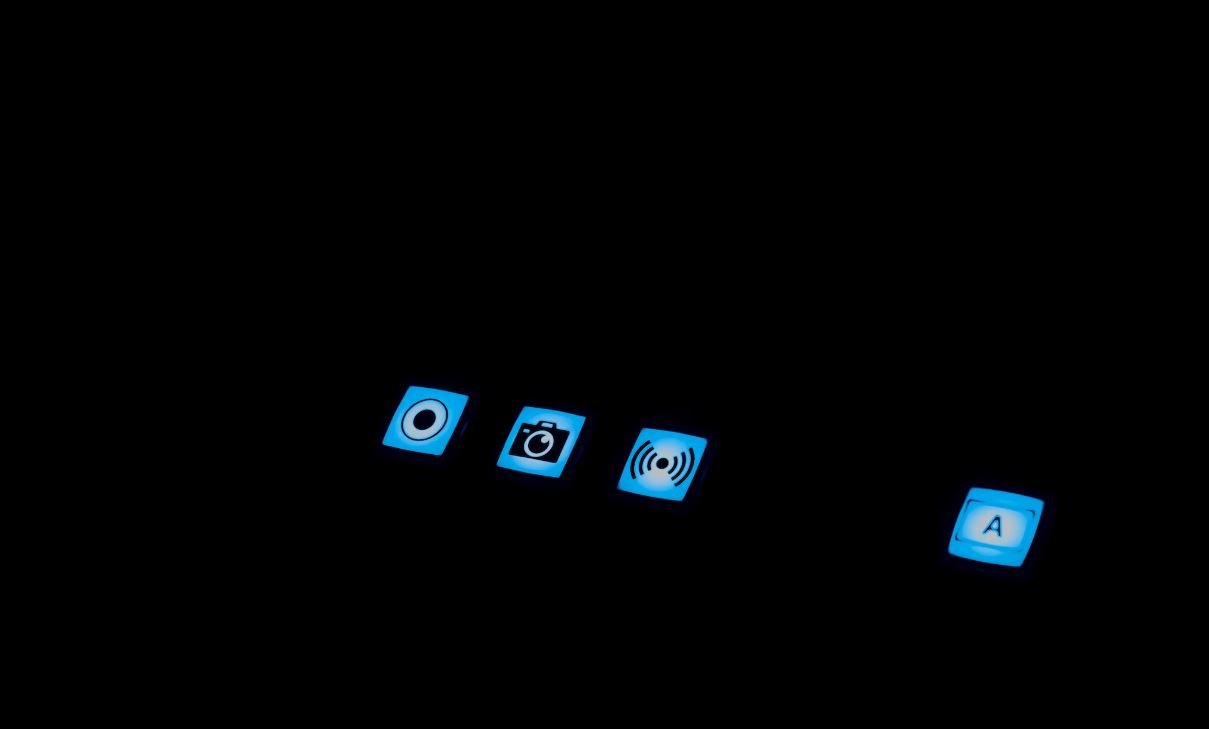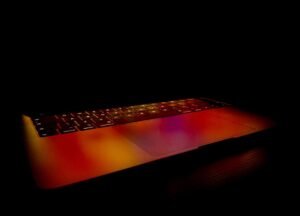What Can Deepfake Do?
Deepfake technology has emerged as a powerful and controversial tool in recent years. Using artificial intelligence, deepfake algorithms can create highly convincing fake videos or images that can be difficult to distinguish from reality. This technology has far-reaching implications across various industries, from entertainment and politics to cybersecurity and privacy. In this article, we will explore the capabilities of deepfake and discuss its potential impacts.
Key Takeaways:
- Deepfake technology utilizes AI algorithms to create realistic fake videos and images.
- Deepfake has raised concerns regarding privacy, misinformation, and cybersecurity.
- It can be both beneficial and harmful, depending on its application and intent.
*Deepfake technology relies on advanced machine learning algorithms to analyze and manipulate visual and audio data, enabling the creation of highly realistic yet entirely fabricated content.* These manipulated videos and images can deceive viewers, effectively making it challenging to discern between real and fake media. Deepfake technology exploits the vulnerabilities inherent in human perception, leading to potential exploitation, misinformation, and significant ethical concerns.
**Entertainment Industry:** Deepfake technology has gained attention in the entertainment industry due to its ability to superimpose one person’s face onto another in videos or movies. By digitally altering visual content, filmmakers can recreate historical figures or bring deceased actors back to life, offering new possibilities for storytelling and visual effects in the film industry. *Imagine witnessing a beloved actor seamlessly playing a role beyond their lifetime.*
**Political Influence:** Deepfake technology presents considerable challenges in the realm of politics and elections. Political leaders could be targeted with convincing fake videos, audio recordings, or messages, leading to potential reputational damage, widespread misinformation, or even causing political instability. *The public’s trust in audio and visual evidence may be significantly impacted with the rise of deepfake technology.*
| Industry | Impacts of Deepfake |
|---|---|
| Entertainment | Enhanced visual effects and potential for historical recreations. |
| Cybersecurity | Increased vulnerability to identity theft, fraud, and social engineering attacks. |
**Cybersecurity Risks:** Deepfake technology can pose severe threats to cybersecurity. By manipulating images or videos, hackers can deceive individuals and organizations, making them vulnerable to identity theft, fraud, or social engineering attacks. The ability to create convincing fake video calls or voice recordings using deepfake technology can enable sophisticated phishing schemes or even bypass biometric identification systems. *The risks for personal and corporate security require diligent countermeasures.*
**Misinformation and Fake News:** The proliferation of deepfake content has the potential to amplify the spread of misinformation and fake news. With deepfake videos becoming increasingly accessible and realistic, the dissemination of fabricated videos or audios with manipulated contexts can easily mislead and deceive viewers. Combating deepfake-driven misinformation is a pressing challenge that demands proactive solutions and critical media literacy education. *We must remain vigilant in our quest for reliable information.*
| Applications | Impacts |
|---|---|
| Entertainment | Enhanced visual effects and potential for historical recreations. |
| Politics | Erosion of trust, misinformation, and potential political instability. |
**Emerging Countermeasures:** Researchers and tech companies are actively developing tools and techniques to detect deepfake content and protect against its malicious use. These countermeasures include forensic analysis, watermarking, and leveraging artificial intelligence to identify inconsistencies in videos or images. Governments and tech platforms are also exploring the implementation of stricter regulations and policies to mitigate the harmful effects of deepfake technology. *Collaboration between various stakeholders is crucial in addressing the challenges posed by deepfakes.*
In a world where truth and authenticity are becoming increasingly vulnerable, the rise of deepfake technology presents a complex and evolving landscape. While it offers exciting possibilities for the entertainment industry, deepfakes also pose significant risks in the realms of cybersecurity, politics, and misinformation. It is imperative for individuals, organizations, and policymakers to stay informed, foster critical thinking, and uphold ethical practices to navigate the impact of deepfake technology effectively.

Common Misconceptions
Misconception #1: Deepfake can create perfect replicas of anyone
One of the common misconceptions about deepfake technology is that it can create flawless replicas of individuals. However, this is not entirely accurate. Deepfakes are created by training deep learning algorithms with a large dataset of images or videos of a person. While the results can be convincingly realistic, there are still subtle imperfections that can be detected upon closer examination.
- Deepfake videos can look remarkably authentic, but they may lack minute facial expressions and micro-expressions
- Background and lighting inconsistencies can reveal the presence of a deepfake
- Deepfakes may struggle to recreate the natural movements and gestures of the original person
Misconception #2: Deepfake can be easily detected with naked eyes
Another misconception is that deepfake videos can be easily spotted using the naked eye. While humans can sometimes detect anomalies or subtle differences, the advancements in deepfake technology have made it increasingly difficult to identify them just by sight.
- Deepfakes can now incorporate facial expressions, emotion, and voice modulation that make them harder to identify
- Sophisticated algorithms enable the blending of the manipulated face seamlessly with the original footage
- Certain deepfake methods utilize artificial intelligence to constantly improve and refine the results, making them more difficult to detect
Misconception #3: Deepfake is only used for malicious purposes
While deepfake technology has raised concerns regarding its potential for misuse, not all applications of deepfake are malicious in nature. Although deepfakes have been associated with fake news, misinformation, and even revenge porn, there are also positive and legitimate uses for this technology.
- Entertainment and film industry have utilized deepfake technology to create realistic visual effects and bring deceased actors back to the screen
- Deepfake can be utilized for educational purposes, such as historical reenactments or animated presentations
- Law enforcement agencies can employ deepfake technology for forensic investigations and training exercises
Misconception #4: Deepfake poses an immediate threat to society
Another misconception is that deepfake technology poses an imminent and significant threat to society. While it is necessary to be cautious about the potential harms, it is important to recognize that widespread awareness, advancements in detection techniques, and legal measures can help mitigate the risks associated with deepfakes.
- Increase in awareness and media literacy can assist individuals in identifying deepfakes and not fall victim to misinformation
- The development of robust deepfake detection tools can aid in identifying manipulated content
- Legal measures can be implemented to hold accountable those who create and distribute malicious deepfakes
Misconception #5: Deepfake is an unpardonable problem
While deepfakes certainly present challenges in various aspects, it is crucial to adopt a balanced perspective and not view deepfakes as an insurmountable problem with no solution. The ongoing efforts in research, technology development, and awareness campaigns are actively addressing the challenges associated with deepfake technology.
- Academic institutions and organizations are committed to developing more sophisticated techniques for detecting deepfakes
- International collaborations and partnerships are being formed to combat the misuse of deepfakes and devise effective countermeasures
- The collective efforts from technologists, policymakers, and the public can contribute to managing and mitigating the risks posed by deepfakes

What Can Deepfake Do
Deepfake technology has gained significant attention and concern in recent years for its ability to manipulate and generate realistic images, videos, and audios. The implications of this technology are far-reaching, impacting various domains such as entertainment, security, and politics. In this article, we explore the capabilities of deepfake technology and its potential consequences.
1. Deepfake in Entertainment
The entertainment industry has embraced deepfake technology for various purposes. Here are some interesting examples:
| Use Case | Example |
|---|---|
| Virtual Acting | Using deepfake to resurrect late actors and actresses for new movie roles. |
| Musical Mashups | Combining different artists’ performances to create unique collaborations. |
| Immersive Experiences | Transporting viewers into movies or TV shows by digitally placing them as characters. |
2. Deepfake in Journalism
The rise of deepfake technology poses significant challenges in the field of journalism. The following examples illustrate its potential impact:
| Impact | Example |
|---|---|
| Misinformation | Creating deepfake videos of politicians making false statements to sway public opinion. |
| Journalistic Ethics | Using deepfake to protect the identity of sources in sensitive news stories. |
| Authenticity Verification | Ensuring the veracity of visual evidence in news reporting through deepfake detection tools. |
3. Deepfake in Law Enforcement
The use of deepfake technology by law enforcement agencies can pose both risks and benefits. Consider the following scenarios:
| Scenario | Example |
|---|---|
| Crime Investigation | Using deepfake to reconstruct crime scenes and generate suspect descriptions. |
| Witness Protection | Creating deepfake videos to conceal the identity of witnesses testifying in high-profile cases. |
| Police Training | Simulating realistic situations using deepfake technology to enhance training exercises. |
4. Deepfake in Politics
Political campaigns and discourse can be significantly impacted by deepfake technology. Explore the possibilities below:
| Application | Example |
|---|---|
| Campaign Strategy | Using deepfake to create persuasive videos endorsing candidates with fake celebrity endorsements. |
| Election Interference | Spreading fake videos of politicians engaging in illegal activities to influence voting behavior. |
| Misrepresentation | Manipulating videos to depict politicians expressing views they do not hold. |
5. Deepfake Detection Techniques
To combat the increasing prevalence of deepfake content, researchers are developing various detection techniques:
| Technique | Description |
|---|---|
| Visual Artifacts | Looking for inconsistencies or anomalies in the video, such as inconsistent lighting or distorted facial features. |
| Speech Analysis | Analyzing audio to detect unnatural voice patterns or manipulation indicators. |
| Deep Learning Models | Training algorithms to identify patterns unique to deepfake videos using large labeled datasets. |
6. Deepfake Impact on Privacy
As deepfake technology continues to advance, concerns about privacy have grown. Consider the following implications:
| Concern | Examples |
|---|---|
| Non-consensual Content | Creating explicit deepfake videos using someone’s likeness without their permission. |
| Identity Theft | Using deepfake technology to impersonate individuals and commit fraudulent activities. |
| Reputation Damage | Falsely attributing offensive or controversial statements to individuals through manipulated videos. |
7. Deepfake and Cybersecurity
Deepfakes can also pose significant cybersecurity risks, as shown in the following examples:
| Threat | Example |
|---|---|
| Phishing Attacks | Using deepfake audio or video to impersonate someone and deceive individuals into sharing sensitive information. |
| Social Engineering | Manipulating deepfake media to trick employees into providing access to secure systems. |
| Fabricating Evidence | Creating deepfake files as false evidence in cybercrime investigations. |
8. Deepfake Regulation
Due to the potential risks associated with deepfake technology, governments and organizations are considering regulatory measures:
| Proposed Regulation | Objective |
|---|---|
| Content Labeling | Requiring clear identification of deepfake content to prevent its inadvertent spread. |
| Algorithmic Accountability | Ensuring transparency and accountability from platform algorithms to detect and remove deepfake content. |
| Education and Awareness | Creating public campaigns to inform individuals about the existence and potential dangers of deepfakes. |
9. Deepfake and Social Engineering
Deepfake technology amplifies the threat posed by social engineering attacks. Consider the following implications:
| Risk | Example |
|---|---|
| Corporate Espionage | Impersonating high-ranking executives to trick employees into sharing confidential company information. |
| Romance Scams | Creating deepfake identities to engage in online relationships and exploit victims emotionally and financially. |
| Political Manipulation | Employing deepfake techniques to deceive individuals and sway public opinion during critical events. |
10. Deepfake Countermeasures
Researchers and technology companies are actively developing countermeasures to combat deepfake threats:
| Countermeasure | Description |
|---|---|
| Blockchain Verification | Using blockchain technology to create a secure and immutable record of original multimedia content. |
| Media Forensics Tools | Developing advanced software to identify deepfake manipulations in images, videos, and audio files. |
| Legal Frameworks | Establishing laws and regulations to hold creators and distributors of deepfake content accountable. |
As deepfake technology continues to evolve, it is crucial for individuals, organizations, and governments to address the associated challenges proactively. Striking a balance between technological advancements and ethical considerations will be essential in navigating the complex implications of this rapidly evolving field.
Frequently Asked Questions
What is deepfake?
Deepfake is a technique that uses artificial intelligence to manipulate or superimpose existing video, audio, or images onto another person’s face, thus creating highly realistic but fake content.
How does deepfake work?
Deepfake technology uses deep learning algorithms, specifically a type of artificial neural network called a generative adversarial network (GAN), to analyze and learn from a large dataset of images and videos of a specific person. It then uses this learned information to modify or generate new content that convincingly mimics the appearance and movements of the target individual.
What can deepfake do?
Deepfake technology can be used to create highly realistic forged videos, audios, or images. It can be applied for various purposes, such as entertainment, political parody, artistic expression, and digital manipulation in movies or advertising. However, it also raises concerns about misinformation, privacy infringement, and potential misuse.
Can deepfakes be used for malicious purposes?
Yes, deepfakes can be used maliciously. They can be employed to create fake news, blackmail individuals, spread misinformation, or for identity theft. This poses serious ethical, legal, and societal challenges.
How can deepfakes be detected?
Detecting deepfakes can be challenging, as they are becoming increasingly sophisticated. However, researchers are developing various techniques to identify deepfakes, including analyzing facial artifacts, inconsistencies in facial expressions and movements, statistical analysis, and utilizing machine learning algorithms specifically designed for deepfake detection.
Are there any laws against deepfakes?
Legislation surrounding deepfakes varies across different countries and jurisdictions. Some countries have specific laws targeting deepfakes and digital impersonation, while others rely on existing laws related to privacy, identity theft, and defamation to prosecute individuals involved in creating or disseminating deepfakes.
What are the potential risks of deepfake technology?
Deepfake technology poses several risks, including the spread of misinformation, erosion of trust in digital media and journalism, potential political and societal destabilization, damage to personal and professional reputations, and violation of privacy rights through the unauthorized use of someone’s likeness.
How can we protect ourselves from deepfakes?
To protect ourselves from deepfakes, it is important to be critical consumers of media, verifying information from multiple reliable sources, and being cautious about sharing or reposting potentially manipulated content. Additionally, staying informed about the latest deepfake detection techniques and supporting research in this field can contribute to better safeguards against the misuse of deepfake technology.
What are the ongoing efforts to combat deepfakes?
Various organizations, academic institutions, and technology companies are actively researching and developing tools and techniques to combat deepfakes. These efforts involve developing better detection algorithms, creating public awareness and education campaigns, collaborating with social media platforms to implement countermeasures, and engaging in legal and policy discussions to address the challenges posed by deepfakes.
What is the future of deepfake technology?
As deepfake technology advances, it will continue to pose significant challenges and raise important ethical and legal considerations. The future of deepfakes will likely see a continuous arms race between the creators and detectors of deepfake content. It is crucial for society to stay vigilant, adapt, and develop solutions that can mitigate the potential negative impacts and enhance the responsible use of this technology.




